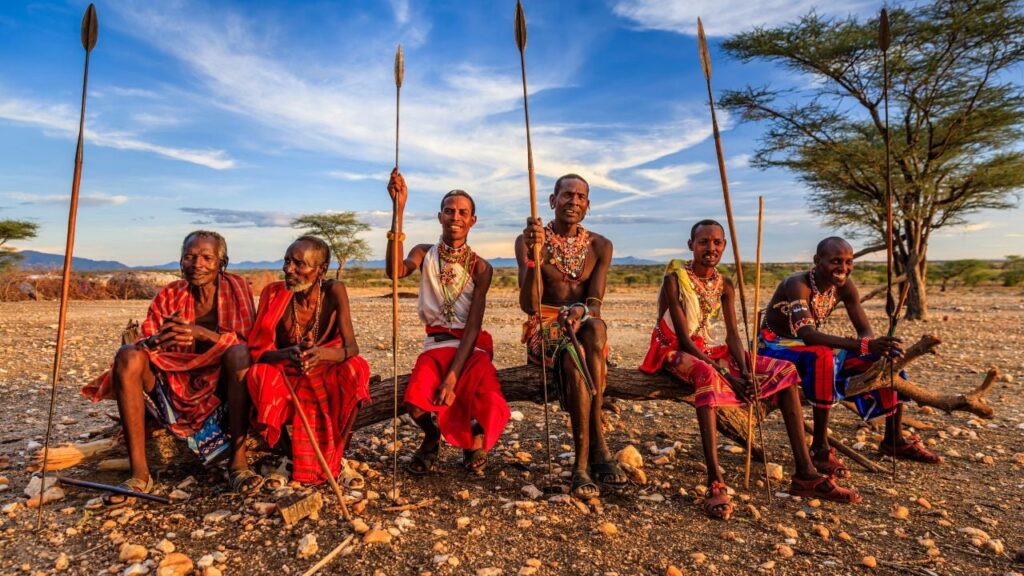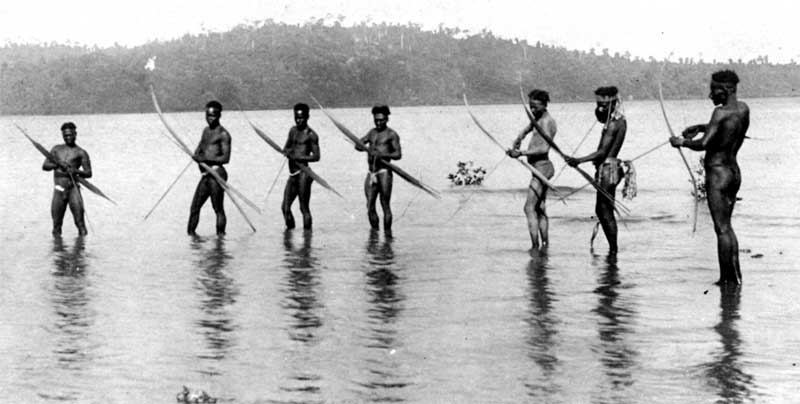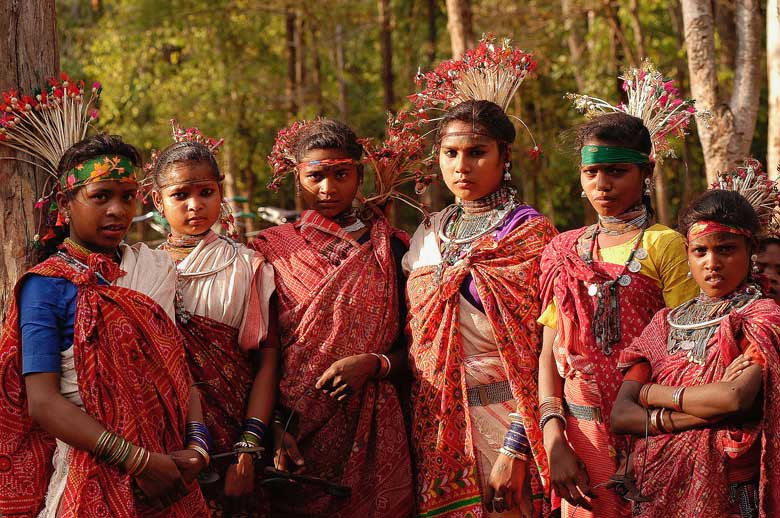Introduction
The Andaman & Nicobar Islands—are home to some of the world’s most ancient and isolated tribal cultures. Inhabited for over 60,000 years, these tribes have maintained unique ways of life in harmony with their natural surroundings. This blog explores their origins, diversity, cultural practices, environmental adaptation, population decline, and why their survival matters.

Origins of the Tribes
- Two main ancestral tribes:
- Negritos: Thought to have migrated from Africa roughly 60,000 years ago; include the Great Andamanese, Onge, Jarawa, and Sentinelese.
- Mongoloids: Arrived from the Malay–Burma coast; include the Nicobarese and Shompen.
These tribes were isolated until the mid-19th century, when British colonization disrupted their traditional lives.
Types of Tribes & Their Lives
1. Great Andamanese
- Historically 10,000 strong, now only 59 individuals (2020), all relocated to Strait Island.
- Once hunter-gatherers; now rely on a mix of traditional hunting and government-provided staples, poultry, and small-scale farming.
- They speak mostly Hindi or Creole today; original languages nearly lost.
2. Onge
- Population fell from 672 in 1901 to just over 100 (2011).
- Semi-nomadic, hunting wild pigs, turtles, and gathering roots; skilled canoe-makers.
- Vulnerable to disease and accidental poisonings; e.g. 2008 methanol incident killed 8.
- Receive shelter, healthcare, schooling via Dugong Creek settlement.
3. Jarawa
- Around 341–400 individuals in South and Middle Andaman.
- Hunter-gatherers: using bows/arrows, harvesting wild pig, fish, honey, and building temporary huts.
- Exposed to outsiders since the construction of the Andaman Trunk Road—risking diseases, exploitation, and “human safari” tourism.
- Protected under buffer-zones and tribal policies; specialized health wards in hospitals.
4. Sentinelese
- Completely uncontacted tribe on North Sentinel Island; population estimated 50–200.
- Fiercely defensive—most famously killed intruder John Chau in 2018.
- Protected by strict “hands-off–eyes-on” policy and buffer zones.
5. Shompen
- Semi-nomadic, living deep in Great Nicobar; around 200–400 individuals, split into Mawa and hostile groups.
- Hunters/gatherers with bows and spears; also practice small-scale pig-rearing and vegetable farming.
- Live in stilt huts; mostly uncontacted until the 1980s.
- Habitat threatened by planned mega-projects like ports and airports.
6. Nicobarese
- Largest tribal group (~29,100 people) across Nicobar Islands.
- Cultivators, fishermen, pig-rearers, and skilled artisans; live in joint-family “Tuhet” systems; predominantly Christian with animist traditions.

Culture, Heritage & Environment
- Art & Craft: Jarawa tattoos; Onge canoe craft; Nicobarese basketry, pottery, mats.
- Music & Dance: Bamboo flutes, drums; harvest and festival songs like Jarawa’s “A-Ka-Do-La” and Onge’s “Bhoola”.
- Languages: Great Andamanese languages extinct; Onge and Jarawa languages oral and undocumented; Nicobarese speak Austroasiatic dialects.
- Ecological Adaptation:
- Onge oral lore helped them survive the 2004 tsunami.
- Jarawa and Shompen built forest technology—canoes, huts, local medicine.

Why Their Population Is Declining
- Diseases: Epidemics like measles, influenza, tuberculosis caused by outside contact.
- Colonial Assaults: British warfare, introduced alcohol, forced relocation—the Great Andamanese population collapsed from 10,000 to under 50 by the 1960s.
- Environmental & Infrastructure Threats: ATR and mega-projects fragment tribal lands and ecosystems.
- Accidents & Exploitation: E.g., Onge methanol incident (2008) and Jarawa exploitation through tourism and voyeurism.
Conclusion
The tribes of the Andaman & Nicobar Islands—from the Great Andamanese (now just 59 on Strait Island) to the fiercely protective Sentinelese—face extinction due to disease, infrastructure, and tourism pressures.
Legal protections like the 5 km buffer zones around Jarawa territory and strict no-contact rules offer vital, yet fragile, safeguards.
To preserve these living links to humanity’s ancient past, it’s essential to enforce these laws, prioritize tribe-led welfare, and support ethical tourism practices.
Their continued existence reminds us how delicate cultural diversity is—and how crucial it is to respect and protect it.

A WordPress Commenter
May 3, 2025 - 4:42 amHi, this is a comment. To get started with moderating, editing, and deleting comments, please visit the Comments screen in the dashboard. Commenter avatars come from Gravatar.